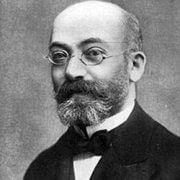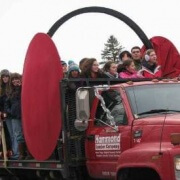January 14 is Caesarean Section Day
 Today is Caesarean Section Day. (Cesarean is a popular alternate spelling.) It commemorates the first recorded successful caesarean delivery in the U.S. On January 14, 1794, Dr. Jesse Bennett performed the operation on his wife, in his home, with no antiseptics or medical equipment.
Today is Caesarean Section Day. (Cesarean is a popular alternate spelling.) It commemorates the first recorded successful caesarean delivery in the U.S. On January 14, 1794, Dr. Jesse Bennett performed the operation on his wife, in his home, with no antiseptics or medical equipment.
Dr. Bennett, 24, did not intend to deliver his own baby. He engaged Dr. A. Humphrey to assist his wife Elizabeth through labor. Humphrey declared it impossible for the baby to be born naturally, after an unsuccessful attempt at delivery with forceps. He refused to assist in a caesarean operation, certain it would prove fatal to mother and baby.
Humphrey’s opinion had merit. At that point in history, statistics in the U.K. and Ireland showed that mothers had only a 15% chance of survival from the surgery.
Elizabeth was sure she would die but hoped the baby could be saved. Her husband made the difficult decision to operate. She was placed on a table and given a large dose of laudanum to make her sleepy. Her sister, Nancy Hawkins, sat by her side holding a tallow candle for light, and two African-American servants to hold her down.
Dr. Bennett performed the operation, removed the baby and stitched the wound with linen thread, which they used in the house to sew heavy clothing. Much to everyone’s surprise, both mother and baby, daughter Maria, survived. Elizabeth lived another thirty-six years. Maria died at the age of seventy-six.
Bennett felt no doctor would believe such an operation could be performed, without proper equipment, in a home in the backwoods of Virginia. He was sure he’d be branded a liar, so he didn’t submit it to a medical society for publication.
Thirty-three years later, in 1827, Dr. John Lambert, an Ohio physician, performed a caesarean delivery with modern equipment. Medical journals at the time reported it as the first caesarean operation in the U.S. Some medical societies still give Dr. Lambert credit.
After Dr. Bennett’s death in 1842, Dr. A.L. Knight, who’d grown up a neighbor of the Bennetts and heard them tell the story, decided to set history straight. He tracked down witnesses Nancy Hawkins and a servant present that evening to confirm the events, then wrote The Life and Times of Dr. Jesse Bennett, M.D., which was published in The Southern Historical Magazine in 1892.
Of course, neither Bennett nor Lambert originated the surgery; it’s been performed for millennia. The term “caesarean” has long been believed to refer to the birth of Julius Caesar, who ascended to the dictatorship of Rome before being assassinated on the steps of the Senate in 46 B.C.
That assumption is likely due to author Pliny the Elder’s referral to one Julius Caesar–ancestor of the ruler–as ab utero caeso (cut from the womb). That explained, he wrote, the cognomen, or descriptive name, “Caesar” which was then carried by his descendants, also called Julius Caesar.
The Roman Lex Caesarea (imperial law), in place roughly 600 years before Caesar’s birth, required a baby to be removed from a mother who had died in childbirth. Burying a pregnant woman was taboo. The procedure was performed on a living woman only when she had reached her tenth month of pregnancy and wouldn’t live through delivery. There is no classical source of the period that records any woman surviving the surgery.
By all indications, future emperor Julius Caesar’s mother Aurelia lived, which would indicate a natural birthing process. Even the Oxford English Dictionary perpetuates this confusion, defining caesarean birth as “the delivery of a child by cutting through the walls of the abdomen when delivery cannot take place in the natural way, as was done in the case of Julius Caesar.” It’s understandable to assume that it refers to the Caesar we know, rather than a Caesar we don’t.
From ancient history to modern times, caesarean section deliveries have been fraught with danger. These days, we may take this surgical procedure’s safety for granted but it hasn’t always been so. Today, we say thank you to reluctant pioneer Dr. Jesse Bennett and physicians everywhere.
![]()
© 2017 – 2022, Worldwide Weird Holidays. All rights reserved.









Leave a Reply
Want to join the discussion?Feel free to contribute!